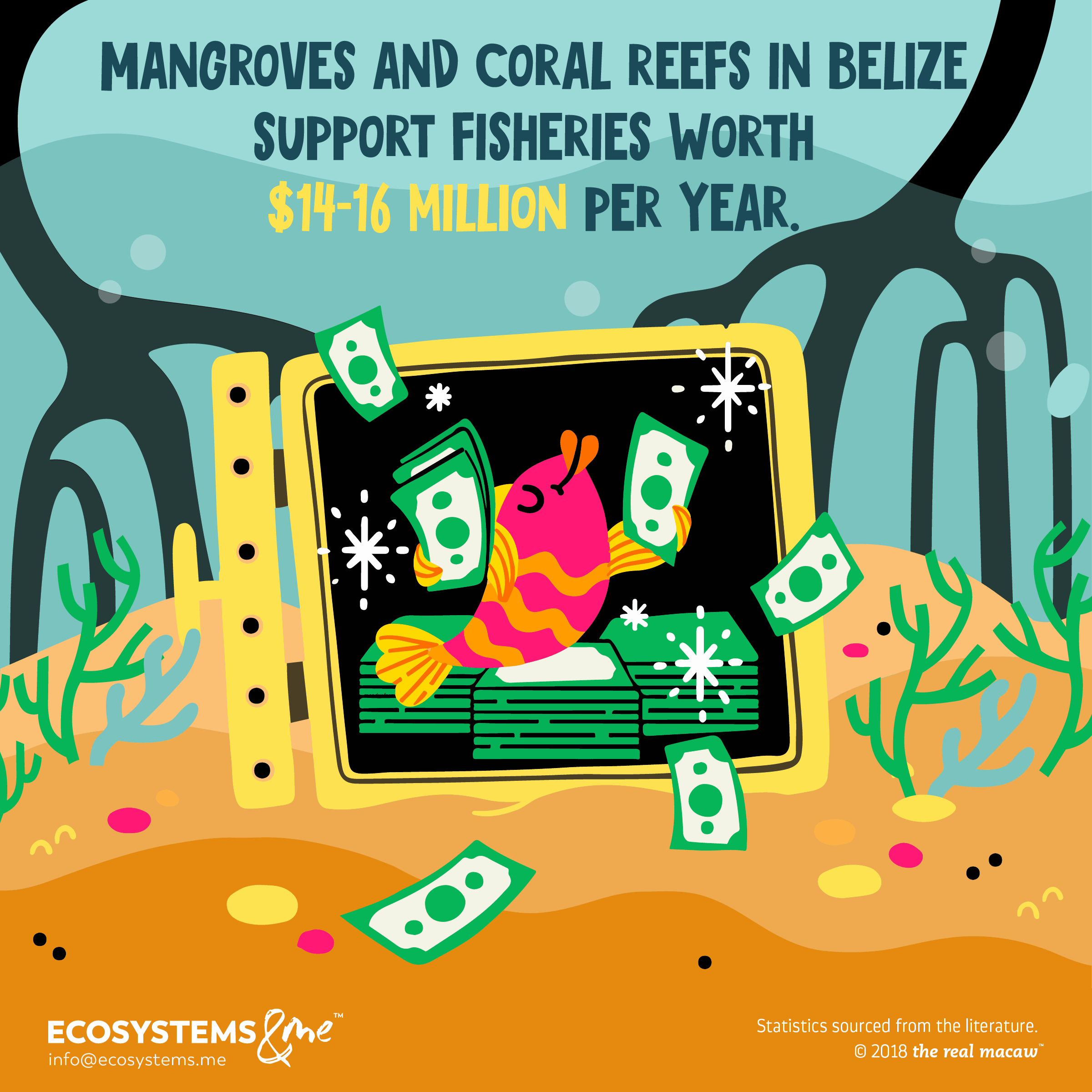
Okay, that’s a bit of an exaggeration. Belize’s best fishing is worth way more than $14-16 million a year. How’s that?
Belize’s fish species do double duty
Belize has many prized fish species, and many of them are sportfish. As you already know if you’ve ever wondered where to fish or what to fish for, the list includes marlin, permit, tarpon, sailfish, tuna, mackerel, mahi mahi, snapper, grouper, and bonefish, among many others. (And if you haven’t wondered, now you know!) But everyone’s favourite sportfish are also really important for commercial and subsistence fishermen – some towns rely almost completely on income from fishing.
Many of Belize’s most prized sportfish spend a lot of their life in reefs and mangroves.
A lot of these fish live in mangroves or on coral reefs for at least part of their lives, like bonefish (reefs), permit (reefs), tarpon (mangroves), snook (mangroves), barracuda (reefs), and snapper and grouper (both reefs). And their market value helps to tell us how much those ecosystems are worth: $14-16 million a year to local fishermen. 80% of this is exported, and the rest is used for subsistence or sold locally.
But why do we say the fish are worth way more than that?
The best fish in Belize aren’t just for sport
That $14-16 million is only for commercial fishing. But that’s is tiny compared to sportfishing and related jobs (like vacations, resorts, charters, guides and guided trips, etc.). Tourism, especially fishing tourism, brings in millions to Belize’s economy every year. Some people depend more on tourism income than they do on fishing!
Reefs and mangroves are worth millions to Belize’s economy every year, by supporting fishing commerce and tourism.
But sportfishing doesn’t really have a clear market price like fish sales do. That makes it hard to use for these calculations – you’d have to use tourism income or another indirect value instead. Of course, this can also tell us something: if you spend time, effort, and money trying to catch a fish, like the infamously elusive permit, it’s definitely worth something. But still, it’s a proxy. Which is why market and export prices can give us an easier estimate.
So what does this really mean?
Coral reefs and mangroves support all those valuable fish species and all the extra money they bring in. Which means that really, it’s not just the fish, but the ecosystems that are worth ~$15 million a year. But again, that’s just to commercial fishermen. If you count tourism and all its related jobs, they’re worth far more than that.
That’s why we ask: which is the real treasure?
